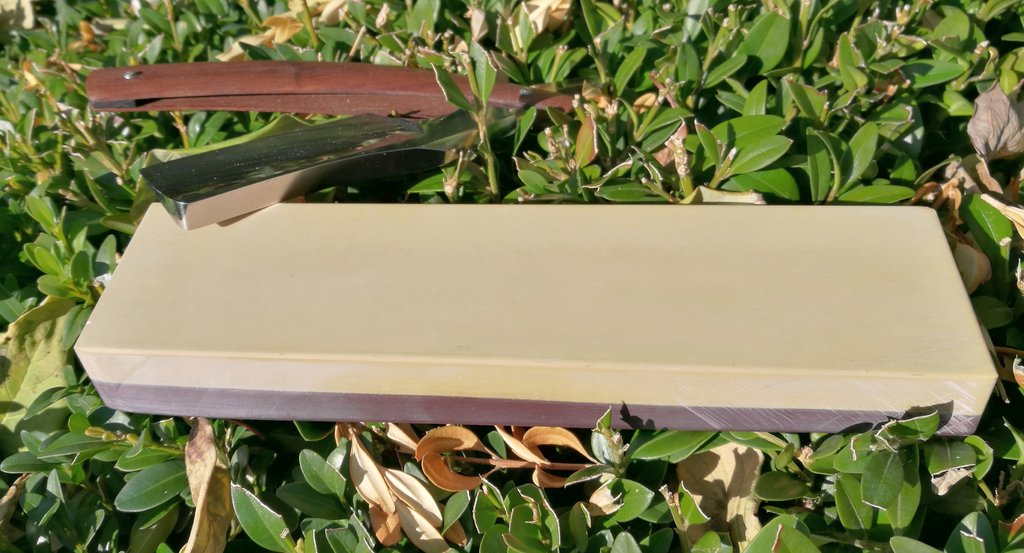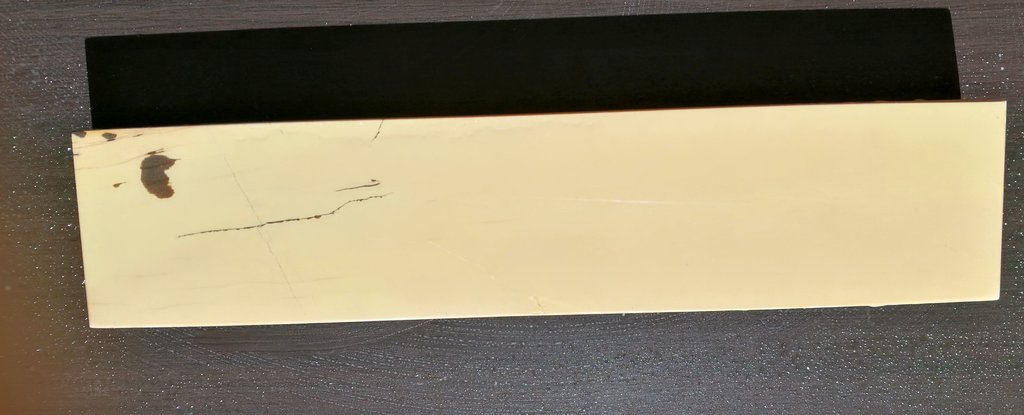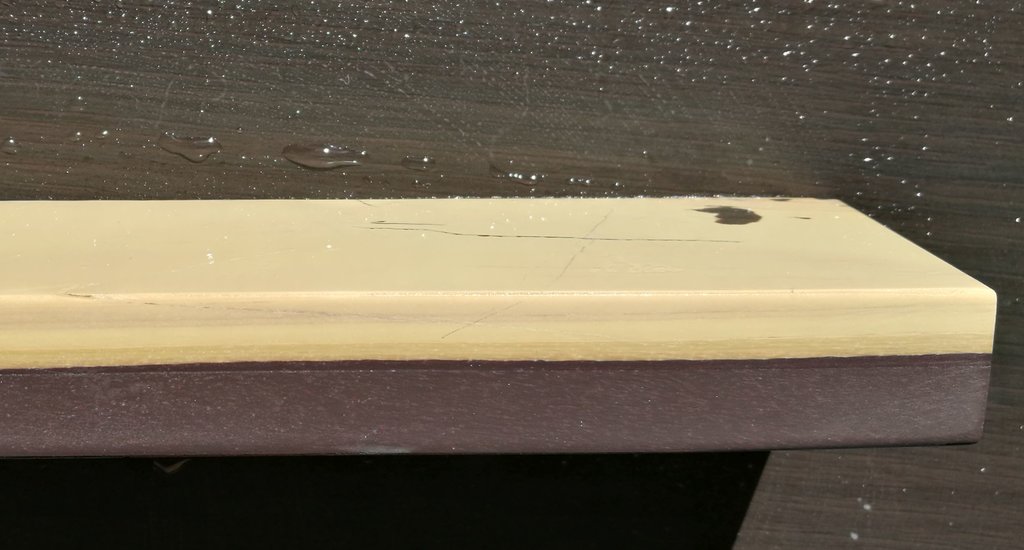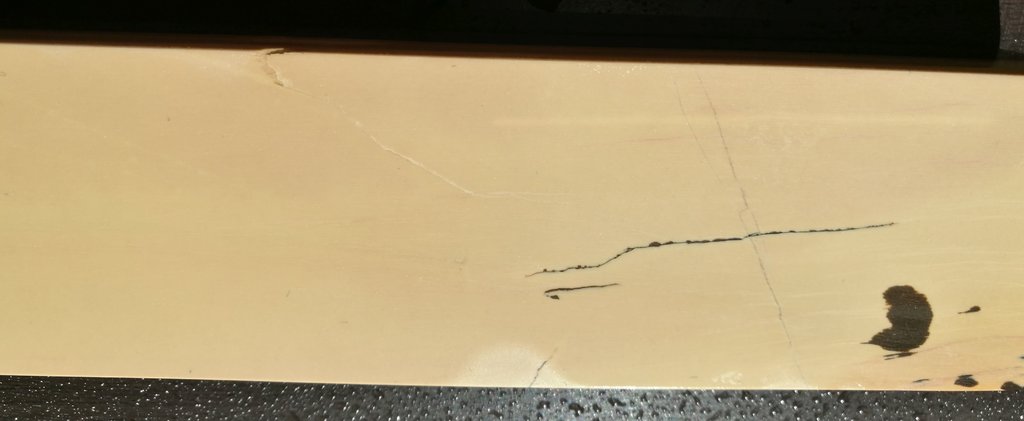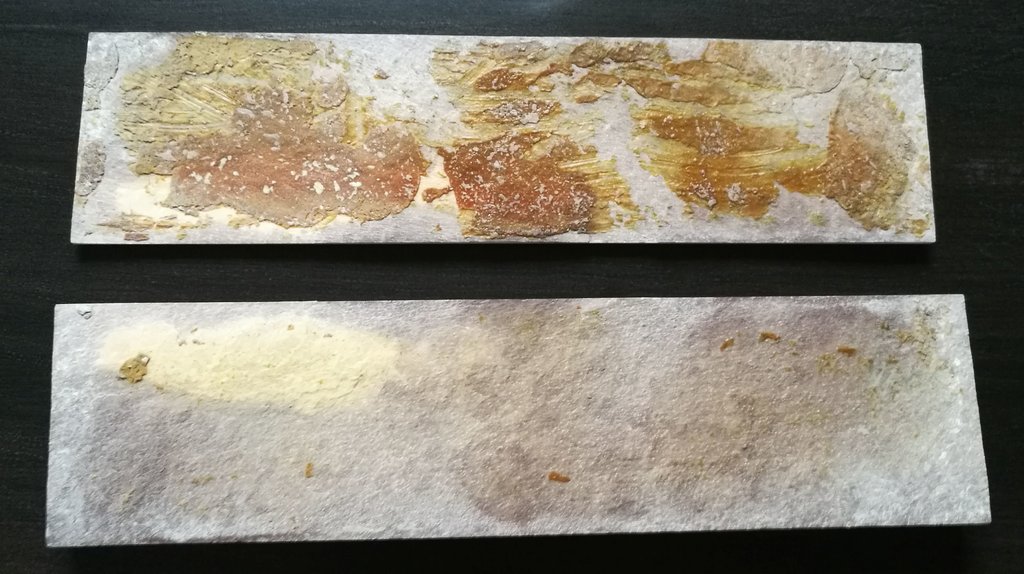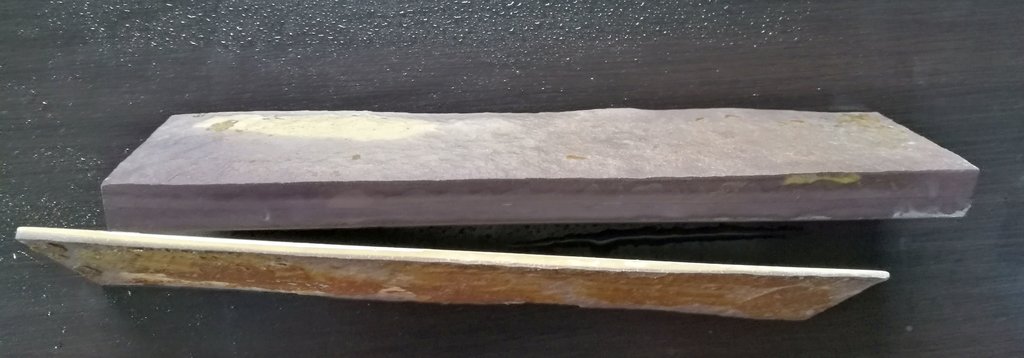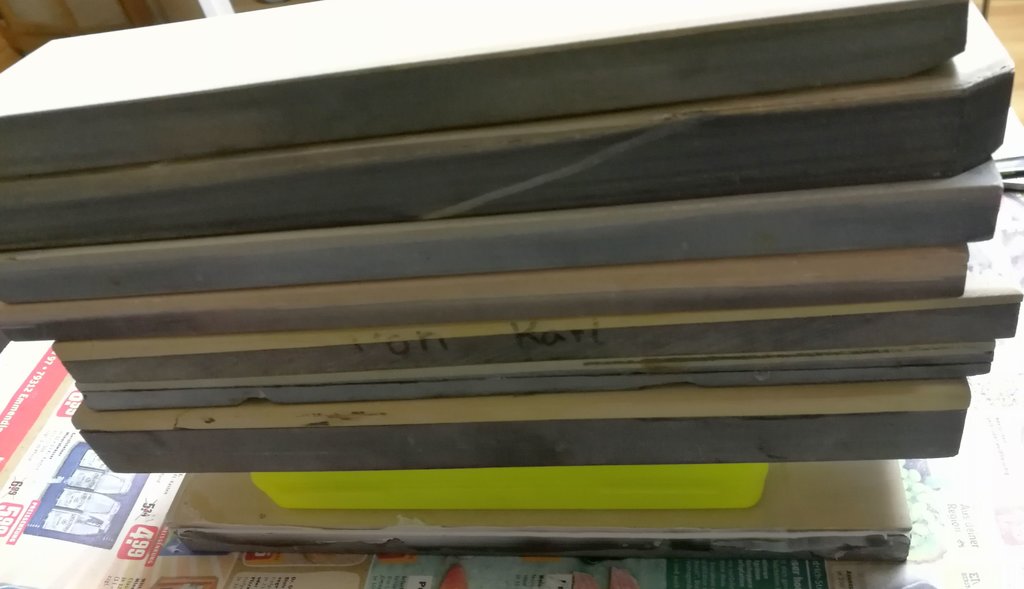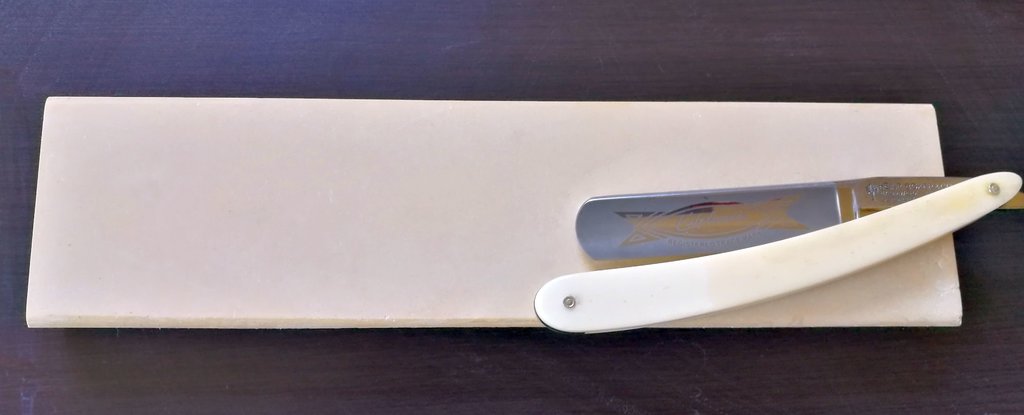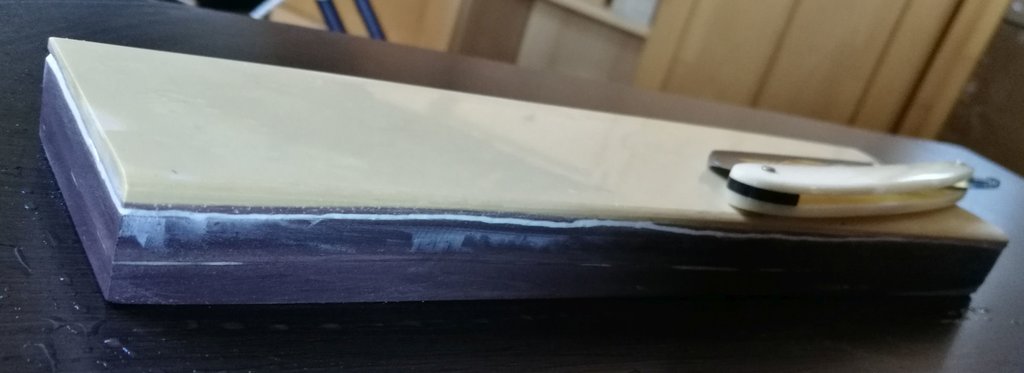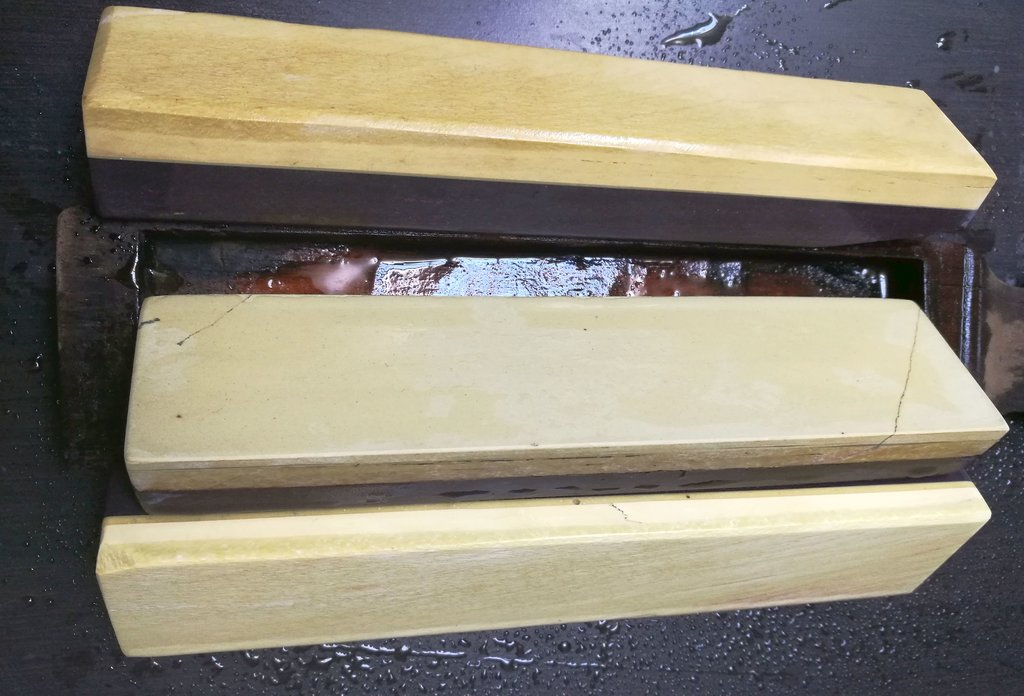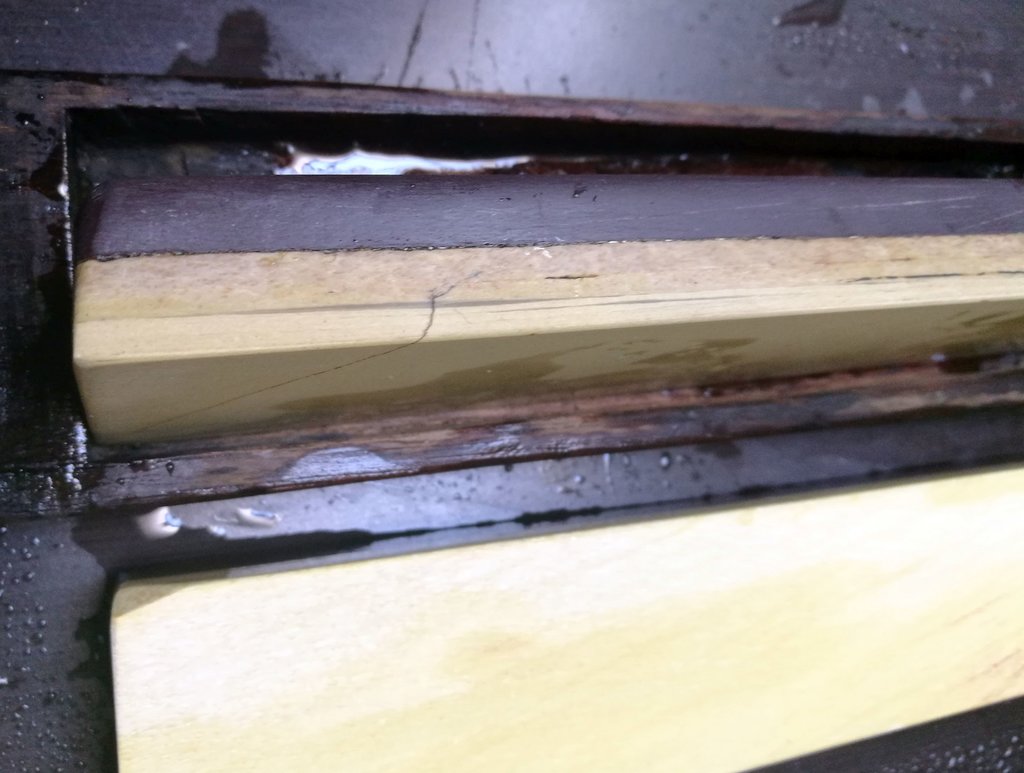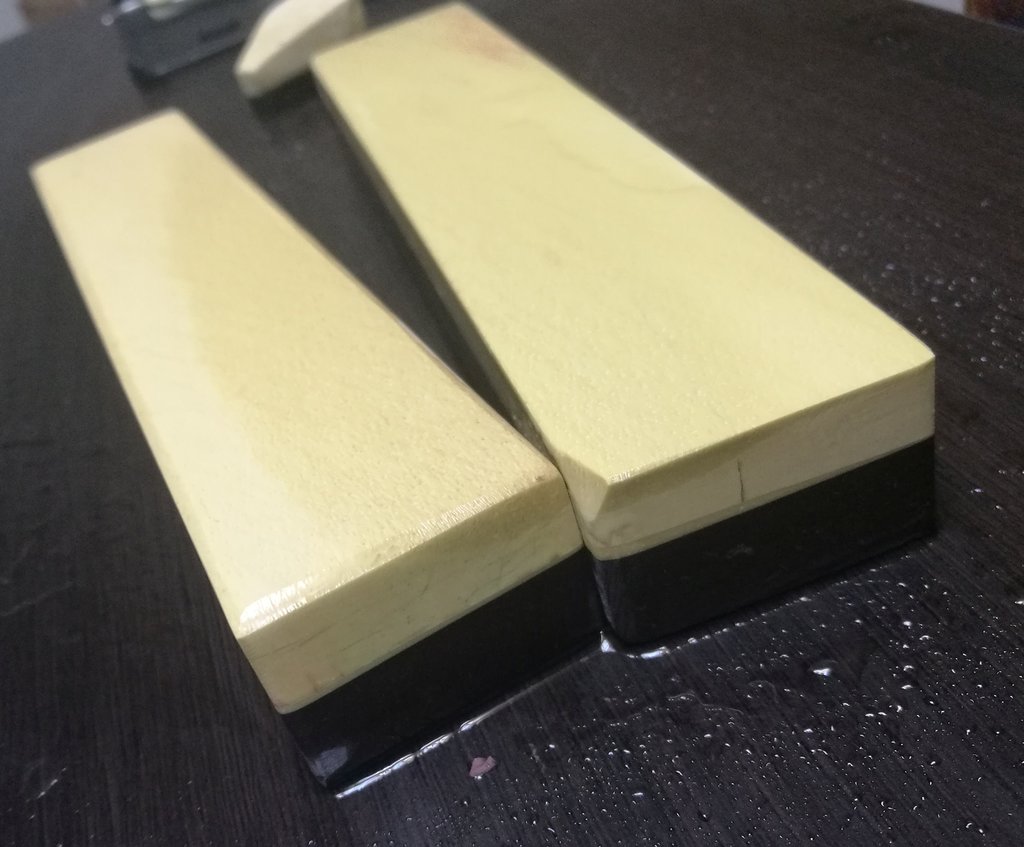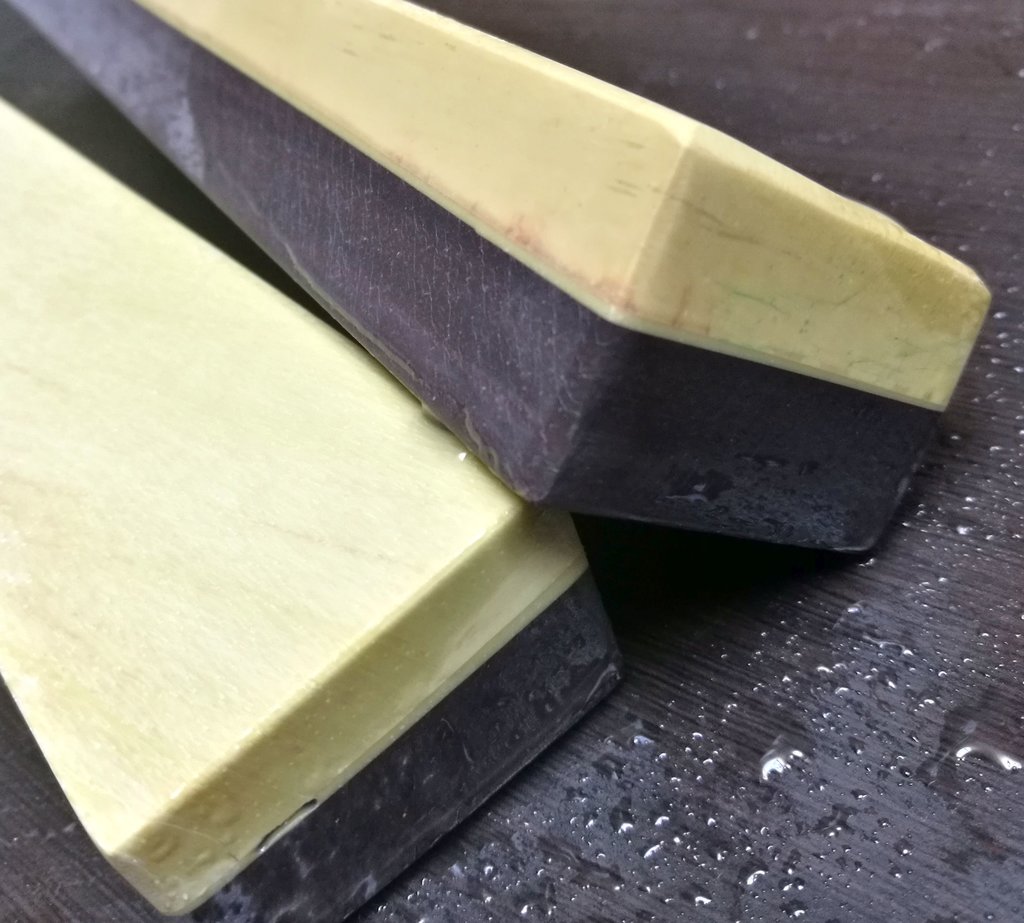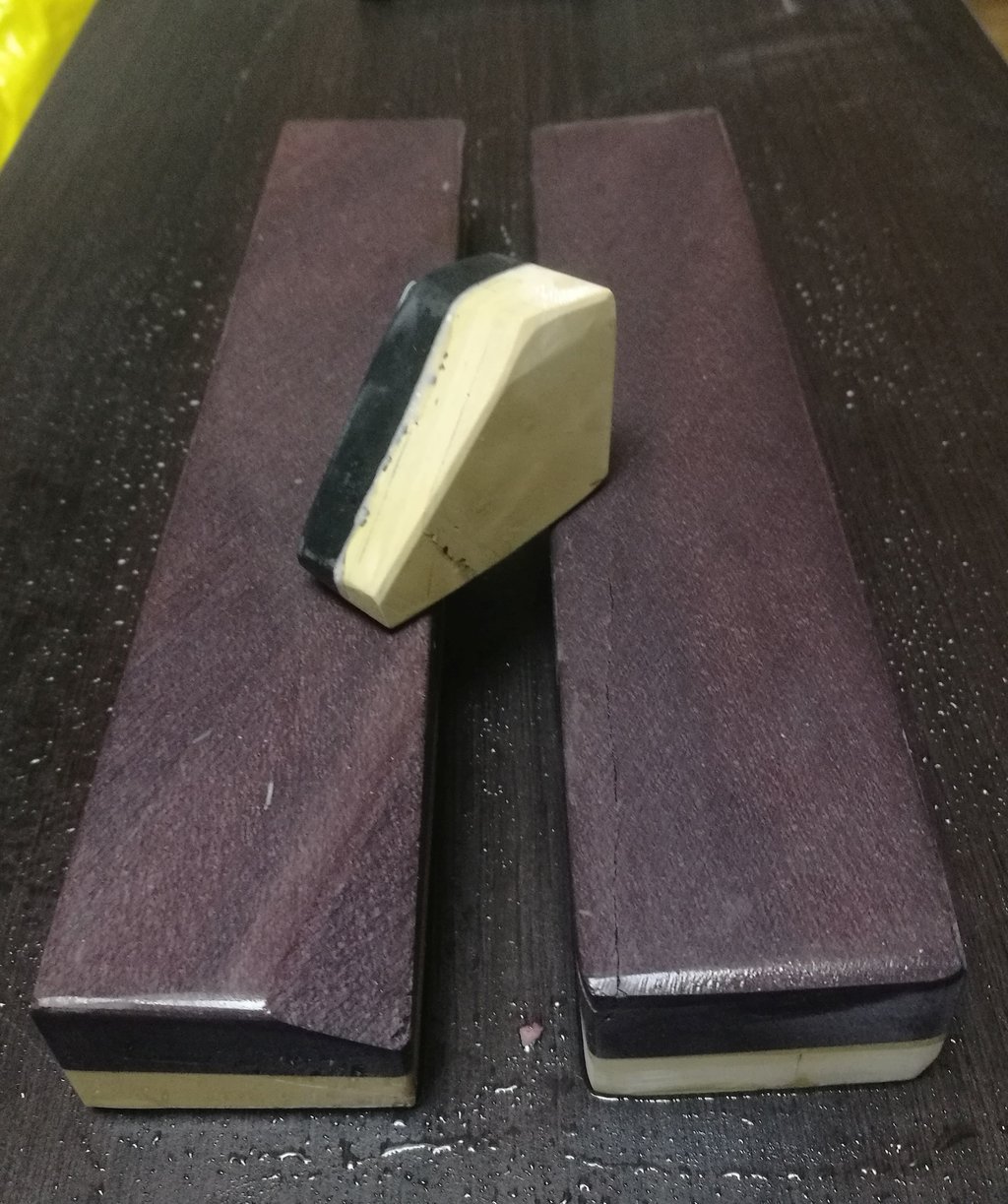Here are my three new freshly lapped beauties.
After 800 grit sandpaper and a slurry stone, there was still a crunchy sound of sharpening steel.
I then rubbed the stones together, very hard feedback now and still not really noiseless with bigger razors. But now they are perfectly smooth and ready for finishing razors. The upper stone was an extra-extra, sold in 1960. The others were not labeled with extra-extra, but they may have been. I honed two razors on the middle stone today (10"x2,2"), it was sold in 1961. The shave was perfect, super sharp and still skin-friendly. The lower stone has the same age, the glue that was used on this three is equal. Hard to believe, how many blades have to be sharpened to wear it out in such a way.
A bit strange, that there is some glue on the sides of the stones. Maybe the 60 year old glue began to flow in hot summers.
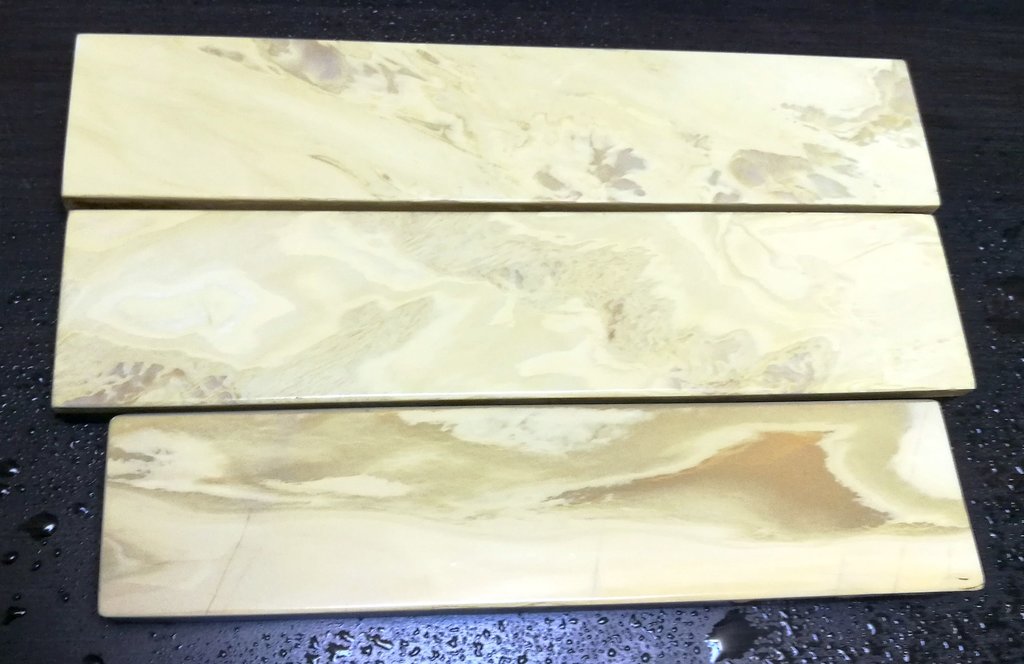
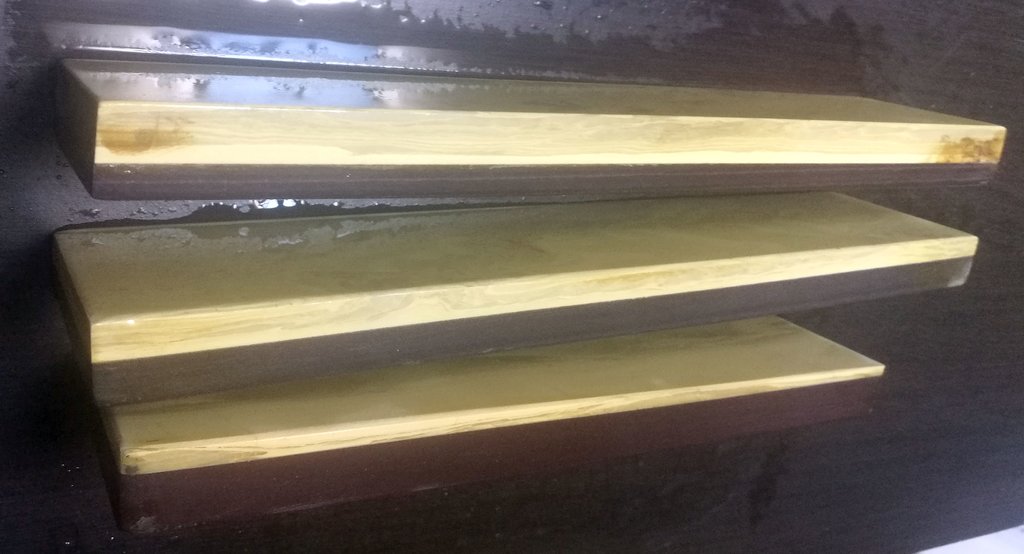
After 800 grit sandpaper and a slurry stone, there was still a crunchy sound of sharpening steel.
I then rubbed the stones together, very hard feedback now and still not really noiseless with bigger razors. But now they are perfectly smooth and ready for finishing razors. The upper stone was an extra-extra, sold in 1960. The others were not labeled with extra-extra, but they may have been. I honed two razors on the middle stone today (10"x2,2"), it was sold in 1961. The shave was perfect, super sharp and still skin-friendly. The lower stone has the same age, the glue that was used on this three is equal. Hard to believe, how many blades have to be sharpened to wear it out in such a way.
A bit strange, that there is some glue on the sides of the stones. Maybe the 60 year old glue began to flow in hot summers.


Last edited:
